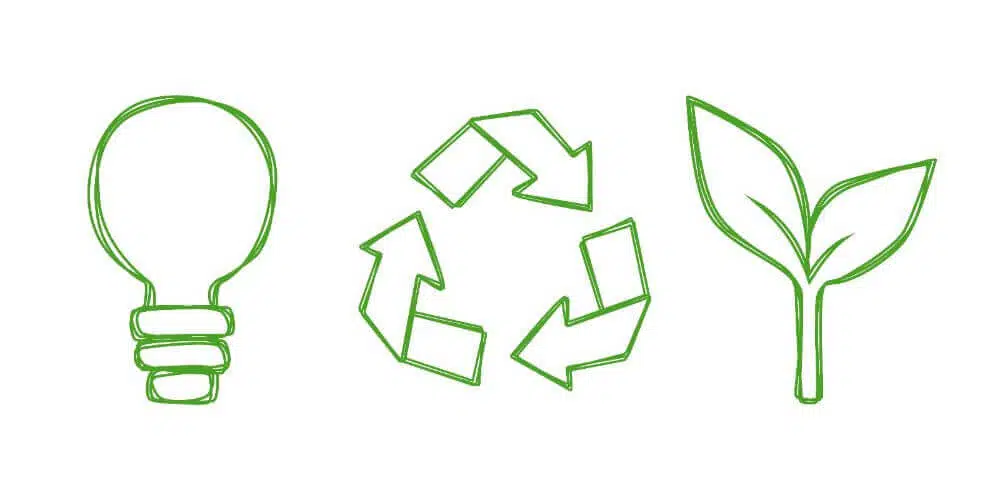- This is how you create stronger messages and more traffic with your top content!
- What is Content Repurpose?
- High-quality content does not stay up-to-date forever.
- Content Repurpose is an effective alternative with many advantages
- Content Repurpose, republishing, and remastering – what are the differences?
- New Content vs. Content Repurpose – this decision wants to be well thought out.
- Find content with recycling potential that’s how it works
- 1. Pareto principle (80/20 rule)
- 2. Low-hanging fruits
- Content Repurpose with strategy – so you should proceed
- Content Clever recycles – 4 tips with which it succeeds
- Be careful when updating old blog articles!
- Conclusion – With Content Repurpose, you will discover new ideas to address users
This is how you create stronger messages and more traffic with your top content!
With Content Repurpose, the ubiquitous sustainability principle also finds its way into the sphere of content marketing. The idea behind it: Popular contributions, guides, posts or videos do not dust in the depths of the archive, but are newly set up and released again.
However, a fact-based procedure is required so that it is successful. In this article, you read when a strategic preparation of your content makes sense and how you can best do it.

What is Content Repurpose?
Content Repurpose means consciously using already published contributions in the long term. Content is reused and converted. In doing so, it can be accommodated in the form of another format on previously unpopular channels.
The creative opportunities to redefine existing relevant content are almost unlimited: they range from the transformation of a blog article to a podcast to the merging of several articles into a comprehensive e-book.
Unlock the potential of content repurposing as a clever strategy to maximize your reach and engagement. Learn how to repurpose your content effectively with the right tools for writers.
High-quality content does not stay up-to-date forever.
Both the ranking in the search engine and the interest of the side visitors are decisively bound to relevant and current content that guarantees added value. Users would like to read news, information, or tips that respond to their wishes, ideas, and questions. If you want to get traffic and performance with content marketing, you have to continuously invest in content assets that skillfully take up the target group’s needs.
However, the constant creation of fresh articles and posts goes hand in hand with an enormous effort of resources that are both temporary and financial. To make matters worse, content is forced. This means that even the most profound blog article is no longer perceived by the readership at some point and thus loses relevance – and is associated with value.
Read Also: Master the Art of Crafting Powerful Eye-catching Headlines for Your Blog Posts
Content Repurpose is an effective alternative with many advantages
Content repurposing is a powerful strategy within digital marketing automation that offers numerous advantages. By repurposing your existing content, you can breathe new life into it and reach a wider audience. Repurposing allows you to leverage different formats and platforms to maximize your content’s exposure and engagement.
Whether you transform a blog post into a video, create an infographic from a podcast episode, or compile social media snippets into an e-book, content repurposing offers endless possibilities. It saves time and resources by maximizing the value of your existing content and extending its lifespan.
Embrace the power of content repurposing as a strategic approach to reach more audiences and amplify your brand’s visibility across various channels.
This is particularly evident from the advantages that arise:
- With good, Content Repurpose, the acquisition of new addressees,
- The renewed distribution pushes the range,
- The consistent communication of a message sensitizes users and strengthens brand positioning,
- The use of new formats opens up access to target groups that are not active on the channels used so far,
- Proven content also conveys fresh knowledge,
- In addition, the chances of success increasing for a good search engine ranking,
- Compared to the creation of new content, Content Repurpose harbors a cost-saving alternative,
- The maximum success can be brought out of top content.
Content Repurpose, republishing, and remastering – what are the differences?
Prepare old content and use it again – various effective marketing strategies in content marketing are similar. Content Repurpose, therefore, visualizes only one possible option to transform content.
For you to understand how the most common practices are different from each other, a small overview follows at this point.
Content Republishing
Republishing means the renewed publication of content without changing its nature. This method is used when a topic from the past becomes relevant again.
Content Remastering
With this technology, only an adaptation is made to a small extent-for example in the context of WDF*IDF optimization or the course of minor updates.
Content Repurpose
This is increasingly about the transformation of the content into new formats to enable new combinations of content assets. This includes, for example, the splitting of long contributions in crispy micro-content.
Content Repurpose is therefore not to be understood as a renewed reuse of the content in its original version. Instead, it is a content marketing strategy that undertakes existing content of targeted transformation to efficiently exhaust resources that have already been applied.
New Content vs. Content Repurpose – this decision wants to be well thought out.
There is no general rule as to when the usage of the content of new production is preferable. The decision for a sensible content strategy must be based on the thorough power of content analysis. It is important to evaluate existing content concerning your Return on Investment (ROI).
Meaningful key figures are:
- Traffic,
- Rankings,
- Backlinks & shares,
- Leads,
- Acquisition/sales.
Find content with recycling potential that’s how it works
In your SEO checklist, discover content with recycling potential. This involves identifying evergreen topics, updating information, and repurposing content to engage audiences and enhance search visibility.
To identify content that offers recycling potential, a detailed keyword analysis is necessary. Not every content is equally suitable for preparation. The content for the target group must have current relevance.
That means in plain language:
Only timeless content in high quality is possible for sensible reuse!
In this sense, for example, the potential for Content Repurpose contains long guidelines, holistic guides, and information articles. You must have a minimum level of thematic depth to design new content assets.
Some different methods help with the search for content, which can be prepared in new formats.
1. Pareto principle (80/20 rule)
For example, you can orientate yourself on the so-called Pareto principle. The method, which is also known as the 80/20 rule, states that 80 % of the success can be explained by 20 % of the funds used. Transferred to the context of content marketing this means:
20 % of the content causes approx. 80 % of traffic on one side.
This is the top content of your page that is very popular with users. You can determine this effective 20 %share of your content by checking the performance of your content. Tools such as Google Analytics help. For example, they show you which content leads to high side visits over a long time.
In this context, the following parameters are meaningful:
- Impressions
- Length of stay
- BOUNCE rate
Ideal Content Repurpose potential offers contributions with a high impression and a high length of stay as well as a low bounce rate. Therefore, search for content, the conversion rate of which is high.
2. Low-hanging fruits

A look at the individual keyword ranking of the individual content sites is worthwhile. Here you can check which keywords with which articles in places 10 to 20 tend. These content assets are referred to under SEOs as so-called “low-hanging fruits”. They are suitable for Content Repurpose, as there is room for improvement in ranking.
By the way: A content relaunch also visualizes a sensible tactic to effectively boost the range and the traffic of one side. This method aims at the strategic revision of articles whose ranking and bounce rate suggest optimization.
Content Repurpose with strategy – so you should proceed
You have several options to let existing content shine in a new light:
Reduction
The content, for example, a contribution from your blog, is divided into smaller, easy-to-grid snacks and prepared as snack content.
Extension
Individual content is merged into an extensive content asset. This is the case, for example, if individual articles form a comprehensive e-book.
Transformation
This means the preparation of content for new channels. For example, a published blog post can be set up as a video.
The contingent of ways to Content Repurpose is your creativity. For example, if you want to reuse texts from your blog, then the following ideas inspire you:
- Creates new list posts from the most popular blog articles-titles such as “The 5 best tips for …” or “10 ways with them …”
- Increases the added value of blog posts with infographics and pictures
- You can also share the infographic or the picture from your blog post on social media like Facebook
- Put popular articles from your blog on a grippy summary and provide them as a download
- You can summarize thematically related blog posts for an e-book with several chapters
- Expand old blog articles and prepare them as crisp and understandable presentations
- Handy quotes or headlines in blog posts are not only well received on your blog – these lines are also shared on social media such as Facebook, Instagram, or Pinterest!
Read Also: Useful Google Chrome Extensions for Travelers
Content Clever recycles – 4 tips with which it succeeds
Content maintenance forms an integral part of the recycling process. Therefore, use the opportunity to prepare, optimize, and bring the content to the channel-specific.
1. Clever tools help you with text optimization
Put on SEO tools when optimizing your content and use the WDF*IDF method. At the same time, it is also worth taking a look at W questions of tools such as Hypersuggest. The Tool Anbalthepublic.com tool also shows you helpful Google search requests.
2. refresh graphics
Enter any graphics used in the recycling process. Here, old tags can be adapted, and outdated information in the description with new keywords.
3. Optimize internal links
Check when the revision of existing contributions also checks whether there are opportunities to set new internal links.
4. thinks strategically from the smallest to the largest format
By systematically making it systematic in Content Repurpose, you guarantee the success of your measures. It makes sense to categorically divide content according to function and length and to follow the Content Repurpose.
This example shows you how you bring the system into the Content Repurpose:
The starting point is short-term content formats such as blog articles. These short content assets can be optimally supplemented with long-shape content, which deals with the topic shown. These include white paper or e-books. You can take this Content Repurpose as a base to transform it into other recurring formats. There are no limits to your ideas. Try podcasts, videos, or social media posts.
You start expanding existing content and then dividing it into smaller snacks. In doing so, you can fully outline the contingent of possible content formats and offer your users a wide range of opportunities to interact with your brand or message.
Be careful when updating old blog articles!
The content of blog articles is ideal for creating Evergreen content, which also pushes the traffic on your side. However, you should never change the URL of the article, otherwise, the contribution will run into nothing. Also, work with transparency – tell your readers that you have changed the article.
Conclusion – With Content Repurpose, you will discover new ideas to address users
Content repurposing visualizes an effective opportunity to exploit the potential of existing content as best as possible. In particular, companies with limited time and budget benefit from this strategy—provided the content can be transformed for a second usage cycle.
When used correctly, this practice, alongside the right content marketing tools, opens up access to previously undeveloped target groups.
You are interested in Content Repurpose and want our specialists to take a look at your content? Contact us – we will be happy to help you!






